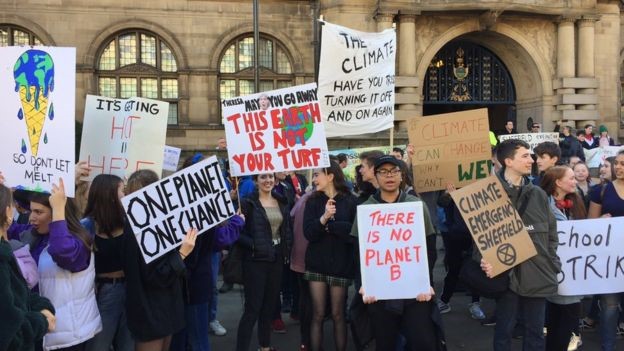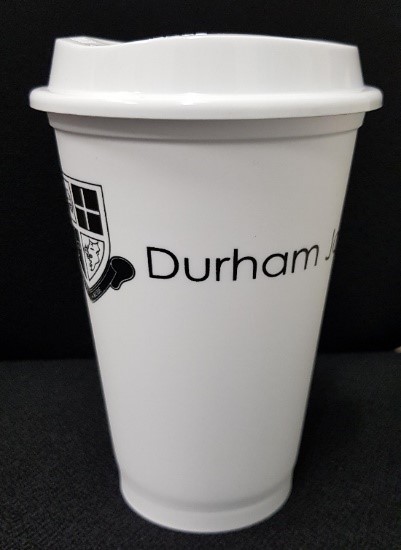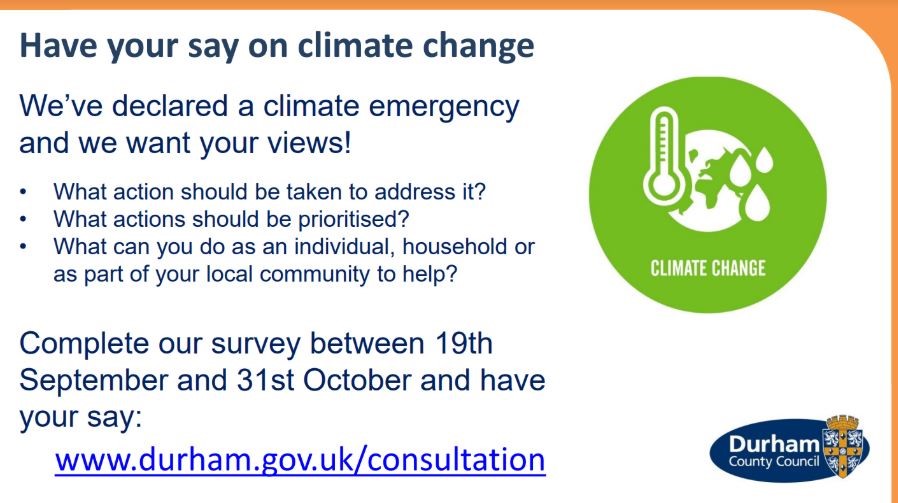25 October 2019

Earlier this term I wrote about the number of conversations that I had with students regarding climate change and their desire to take action and to make a difference at school. This has been a reoccurring theme since the spring term. In March 2019, a small group of Year 7 students approached me with a series of questions about the school’s carbon footprint. Uniformly polite, they made me question the extent to which my own pattern of behaviour – use of plastic, recycling, transport – was setting a good example within my family. That’s the point with young people; they can make adults change their behaviour if they point out the flaws in any given argument.
We have worked hard since then to consult with students and to find a way to reduce our carbon footprint; we clearly have an institutional responsibility to do so. We also want to encourage students to discuss their concerns in school and to identify the simple steps that all members of the school community can take to make a difference. It also seems sensible to outline some of the important work that we have always done and have not always shared.
From the commissioning of the school building in 2009, we have set out to remain conscious of our impact upon the environment and sought, where possible and affordable (in the context of 9 years of real terms cuts and austerity), to adopt carbon footprint reducing strategies.
Our building has a range of ‘in-built’ low-carbon footprint systems. For example, we employ Dyson Air Blade Hand dryers throughout the school. This was an initiative that we paid for directly in 2009, to ensure the complete removal of waste in the form of paper towels. Therefore, the school produces no paper waste from hand drying, large quantities of which previously had to be sent to landfill. The biggest impact on a Dyson Airblade hand dryer's carbon footprint is through its energy use; the Dyson digital motor spins at 88,000 rpm, five times faster than a Formula 1 car engine, ensuring excellent efficiency.
- 20g CO2e: standard electric dryer
- 10g CO2e: one paper towel
- 3g CO2e: Dyson Airblade dryer
The building was also designed with a rooftop Rainwater Harvesting System that collects rainwater and processes it for use in flushing toilets. We are delighted to make use of this sustainable process that helps in preserving rainwater for our use and stores it for the future needs of the school. These are both important ways in which the school has made a difference and helps the environment.
The issue raised by students more than any other relates to the use of plastic packaging and cutlery at lunchtime. Over several years, we have taken steps to reduce dependence on single use plastics, but are delighted to announce that, as of Monday 4th November, Durham Johnston will entirely remove single use plastic cutlery and hot food take-away packaging from our catering provision. Bio-degradable  cutlery and hot food packaging will still be available, for those who request it, at a cost of 5p for cutlery and 10p for packaging. This reflects the increased costs of these products to the school and serves to encourage greater use of reusable metal-ware and crockery that are always available. The school aims to remove all remaining single use plastic from Christmas 2019 onwards. We are currently reviewing the plastic used within our self-managed catering service. Whilst there are few affordable alternatives to existing plastic bottles for water and soft drinks, we expect more to become available as consumers, like us, demand the development of cost effective products.
cutlery and hot food packaging will still be available, for those who request it, at a cost of 5p for cutlery and 10p for packaging. This reflects the increased costs of these products to the school and serves to encourage greater use of reusable metal-ware and crockery that are always available. The school aims to remove all remaining single use plastic from Christmas 2019 onwards. We are currently reviewing the plastic used within our self-managed catering service. Whilst there are few affordable alternatives to existing plastic bottles for water and soft drinks, we expect more to become available as consumers, like us, demand the development of cost effective products. From 4th November, we will also be introducing branded, reusable hot drinks cups. They will be available to buy from the Atrium Café and Café 6. These will cost £2.50 with a free drink included. Every refill, thereafter, will receive a 10p discount. As you will appreciate, this has taken a little time, but is clearly a positive step that I hope will be supported by all members of the school community.
We have also considered how to introduce greater awareness and discussion of environmental issues into the school curriculum. A new Environmental Society has been set up within the Geography department and is meeting regularly. Year 12 and 13 students have participated in Local Authority meetings relating to the Durham County Council’s ‘Climate Emergency’ strategy and will be key figures at the ‘Young People’s Vision for Climate Change’ regional conference in January 2020. During the next half-term we will focus upon ‘climate change; changing habits’ during form period and will have a recycling competition via the school’s house system. One of our school governors has also asked to focus on the school’s response to climate change as part of her remit. These developments should provide opportunities for discussion and should increase awareness.
By changing what we do at school and making students more aware, we hope to promote sustainable change in the wider community. As a parent reading this, I would suggest talking at home about the changes that you can make too. If you are unsure about the issues that are important, or how to make small changes that, collectively, can make a big difference, the links below might be very helpful. The first is from the BBC, the second from Friends of the Earth. You might also want to take part in the Durham County Council climate change consultation that is currently taking place.
https://www.bbc.com/future/article/20181102-what-can-i-do-about-climate-change
https://friendsoftheearth.uk/climate-change/what-can-I-do-to-stop-climate-change
Have a good half-term.
Mr O’Sullivan

